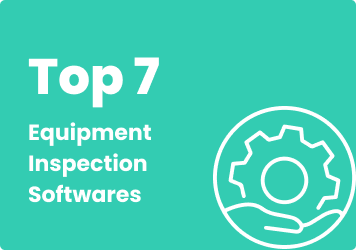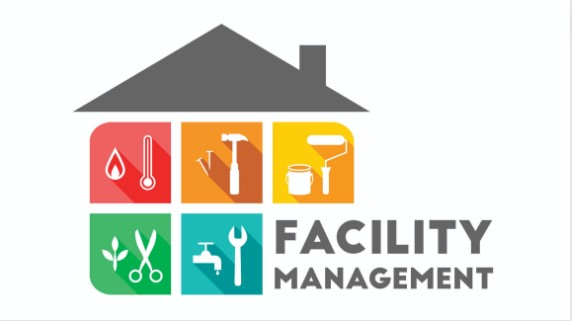
Predictive maintenance is the future of Facility Management
Viki Dongare |
27 Mar 2024 |
14:59 PM
- Understanding the Importance of Predictive Maintenance in Facility Management
- Exploring the Role of Technology in Modern Facilities Management industry
- Predictive Maintenance Explained
- Evolution from Preventative Maintenance: A Brief Overview
- The Future of Facility Management
- Leveraging Artificial Intelligence in Predictive Maintenance
- How Predictive Maintenance AI Transforms Facility Management
- Implementing Predictive Maintenance Effectively
- What the Future Holds: Advancements in Predictive Maintenance needs
- Benefits of Predictive Maintenance teams
- The Influence of IoT in Predictive Maintenance
- How IoT Enhances Predictive Maintenance Capabilities
- Realizing the Payoffs: Predictive Maintenance in Action
- Conclusion

Top 7 Equipment Inspection Software for 2024: Comprehensive Review and Comparison
Adarsh Kumar 09 Jun 2024 | 07:51 AMDiscover the top 7 equipment inspection software of 2024. Learn about their features, pricing, and why they stand out in the market....
Understanding the Importance of Predictive Maintenance in Facility Management
Predictive maintenance (PM) stands at the forefront of revolutionizing facility management practices, offering a proactive approach to equipment upkeep. In today's dynamic business landscape, facilities managers face the daunting task of ensuring the seamless operation of complex systems while simultaneously optimizing resources. This is where predictive maintenance, fueled by advancements in technology, comes into play.
Facility managers are tasked with the critical responsibility of overseeing various aspects of facilities management, including maintenance, operations, and energy efficiency. In the ever-evolving facilities management industry, where downtime is costly and inefficiency is unacceptable, predictive maintenance emerges as a game-changer.
Exploring the Role of Technology in Modern Facilities Management industry
By harnessing the power of data analytics, artificial intelligence, and machine learning, facilities managers can anticipate equipment failures, optimize energy efficiency, and streamline maintenance operations. This not only leads to cost savings but also enhances operational efficiency, ensuring that facilities run smoothly and effectively.
Predictive Maintenance Explained
What is Predictive Maintenance?
Predictive maintenance is a proactive maintenance strategy that leverages data analytics and technology to predict when equipment is likely to fail, allowing for timely maintenance before breakdowns occur. Unlike traditional reactive or preventative maintenance approaches, which rely on scheduled inspections or fixing equipment after it fails, predictive maintenance uses real-time data to anticipate issues and take corrective action before they escalate.
Evolution from Preventative Maintenance: A Brief Overview
Preventative maintenance, while effective in reducing unexpected downtime, often leads to unnecessary maintenance activities and costs. As facilities become more complex and interconnected, the limitations of preventative maintenance have become evident. This has paved the way for the evolution towards predictive maintenance, which offers a more data-driven and efficient approach to maintenance.
The Need for Predictive Maintenance Across Industries

In today's fast-paced business environment, downtime is not an option. Industries ranging from manufacturing and healthcare to hospitality and transportation rely heavily on equipment and infrastructure to operate smoothly. Any unplanned equipment failures can result in significant financial losses, compromised safety, and damage to reputation. Hence, there is a growing need for predictive maintenance solutions across various sectors to ensure uninterrupted operations, optimize resources, and improve overall efficiency.
The Future of Facility Management
Why Facility Managers Need Predictive Maintenance
In today's rapidly evolving facility management landscape, facility managers face increasing pressure to maximize efficiency while minimizing downtime and costs. Traditional maintenance approaches often lead to reactive responses to equipment failures, resulting in disruptions to operations and increased expenses. Predictive maintenance offers a solution by harnessing advanced technologies such as data analytics, artificial intelligence, and machine learning to predict potential equipment failures before they occur. By proactively addressing maintenance needs, facility managers can optimize asset performance, extend equipment lifespan, and enhance operational efficiency.
Future Focused: Why Predictive Maintenance Is More Important Than Ever
With advancements in data analytics and predictive technologies, predictive maintenance is not only possible but also increasingly essential for modern facility management practices. By leveraging historical data, analyzing patterns, and deploying predictive algorithms, facility managers can anticipate equipment failures and take proactive measures to prevent them. While challenges such as initial investment and technical expertise may exist, the benefits of predictive maintenance far outweigh the costs, making it a viable and valuable strategy for the future of facility management.
Predictive Maintenance - Is It Even Possible?
With advancements in data analytics and predictive technologies, predictive maintenance is not only possible but also increasingly essential for modern facility management practices. By leveraging historical data, analyzing patterns, and deploying predictive algorithms, facility managers can anticipate equipment failures and take proactive measures to prevent them. While challenges such as initial investment and technical expertise may exist, the benefits of predictive maintenance far outweigh the costs, making it a viable and valuable strategy for the future of facility management.
Leveraging Artificial Intelligence in Predictive Maintenance
The Role of AI in Predictive Maintenance data analysis
Artificial intelligence (AI) plays a pivotal role in revolutionizing predictive maintenance practices in facility management. By analyzing vast amounts of data collected from sensors and other sources, AI algorithms can detect patterns and anomalies indicative of potential equipment failures. This enables facility managers to anticipate maintenance needs before they escalate into costly breakdowns, ultimately improving asset reliability and operational efficiency.
How Predictive Maintenance AI Transforms Facility Management
Predictive maintenance AI empowers facility managers to make data-driven decisions regarding maintenance schedules and resource allocation. By leveraging AI-powered predictive analytics, facility managers can optimize maintenance operations, minimize downtime, and extend equipment lifespan. Moreover, AI-driven insights enable proactive maintenance strategies, reducing emergency repairs and associated costs.
Automation in Maintenance Operations
Automation plays a crucial role in streamlining maintenance operations and enhancing efficiency. AI-powered systems can automatically generate work orders, prioritize tasks based on criticality, and even schedule maintenance activities during off-peak hours to minimize disruptions. By automating routine tasks, facility managers can focus their efforts on strategic initiatives and proactive maintenance efforts, ultimately driving cost savings and operational excellence.
Implementing Predictive Maintenance Effectively
Staying Ahead of Problems: The Key to Success
Facility managers must proactively identify potential issues before they escalate into costly problems. Predictive maintenance provides the tools and insights necessary to achieve this goal by leveraging data analytics and artificial intelligence to predict equipment failures with high accuracy. By implementing proactive maintenance strategies, facility managers can minimize downtime, reduce emergency repairs, and optimize resource allocation, ultimately ensuring the smooth operation of facilities.
Effective Implementation Strategies for Predictive Maintenance
Effective implementation of predictive maintenance requires careful planning and execution. Facility managers must first assess their existing infrastructure and data capabilities to determine readiness for predictive maintenance adoption. Next, they should invest in advanced technologies and data analytics tools tailored to their specific needs. Additionally, training staff on new systems and processes is crucial for successful implementation. Continuous monitoring and evaluation of predictive maintenance initiatives are essential to fine-tune strategies and maximize results.
What the Future Holds: Advancements in Predictive Maintenance needs
The future of predictive maintenance is bright, with advancements in technology driving continuous improvement. As data analytics and machine learning algorithms become more sophisticated, predictive maintenance will become even more accurate and efficient. Moreover, integration with emerging technologies such as the Internet of Things (IoT) will enable real-time monitoring and predictive capabilities for a wider range of equipment and systems. By embracing these advancements, facility managers can unlock new levels of operational excellence and efficiency in facility management.
Benefits of Predictive Maintenance teams
Looking Ahead and Saving Time: Advantages of Predictive Maintenance
Predictive maintenance offers numerous advantages for facility managers and their teams. By proactively identifying potential equipment failures, predictive maintenance helps facility managers anticipate maintenance needs before they escalate into costly issues. This proactive approach saves both time and money by minimizing downtime and reducing the need for emergency repairs. Additionally, predictive maintenance allows facility managers to schedule maintenance activities during off-peak hours, further optimizing resource allocation and maximizing operational efficiency.
Improved Coordination Effort in Facility Management industry

Effective coordination is essential for successful facility management operations. PM facilitates improved coordination efforts by providing real-time insights into equipment health and performance. With access to predictive analytics, facility managers can coordinate maintenance activities more effectively, ensuring that resources are allocated efficiently and tasks are prioritized based on criticality. This streamlined approach to coordination enhances overall operational efficiency and contributes to the seamless operation of facilities.
Even More Accurate Predictions: The Power of Data Analytics
One of the key benefits of PM is its ability to provide even more accurate predictions through the power of data analytics. By analyzing historical data and identifying patterns indicative of potential equipment failures, predictive maintenance algorithms can generate highly accurate predictions. This enables facility managers to take proactive measures to address maintenance needs before they result in downtime or costly repairs. As data analytics technologies continue to advance, PM teams can expect even greater accuracy and precision in their predictions, further enhancing the effectiveness of their maintenance efforts.
The Influence of IoT in Predictive Maintenance

Exploring the Internet of Things (IoT) in Facility Management
The Internet of Things (IoT) has emerged as a game-changer in facility management, revolutionizing how equipment and systems are monitored and maintained. IoT technology involves connecting devices and sensors to the internet, allowing for real-time data collection and analysis. In facility management, IoT-enabled sensors are installed on equipment and infrastructure to monitor various parameters such as temperature, vibration, and energy consumption.
How IoT Enhances Predictive Maintenance Capabilities
IoT enhances predictive maintenance capabilities by providing facility managers with unprecedented access to real-time data. By continuously monitoring equipment performance, IoT sensors can detect subtle changes or anomalies that may indicate potential equipment failures. This data is then analyzed using advanced algorithms to generate predictive maintenance insights. Moreover, IoT facilitates remote monitoring, allowing facility managers to monitor equipment health and performance from anywhere, at any time.
Realizing the Payoffs: Predictive Maintenance in Action
The implementation of PM powered by IoT technology yields tangible payoffs for facility managers. By proactively identifying and addressing maintenance needs, facility managers can minimize equipment downtime, reduce emergency repairs, and extend equipment lifespan. Additionally, PM enables optimized resource allocation and improved operational efficiency, leading to cost savings and enhanced productivity. As IoT technology continues to evolve, the influence of IoT in PM will only continue to grow, further solidifying its role in shaping the future of facilities management.
Conclusion
PM stands as a beacon of innovation in the field of facility management. By leveraging advanced technologies such as data analytics, artificial intelligence, and the Internet of Things, facility managers can proactively anticipate equipment failures, optimize energy consumption, and streamline maintenance operations. The implementation of PM not only leads to cost savings and operational efficiency but also contributes to enhanced reliability and sustainability in facility management practices.
As we look towards the future, the role of PM will continue to expand, driven by advancements in technology and the growing demand for proactive maintenance solutions. By embracing PM, facility managers can navigate the complexities of modern building systems with confidence, ensuring the smooth operation of facilities and the achievement of organizational goals.